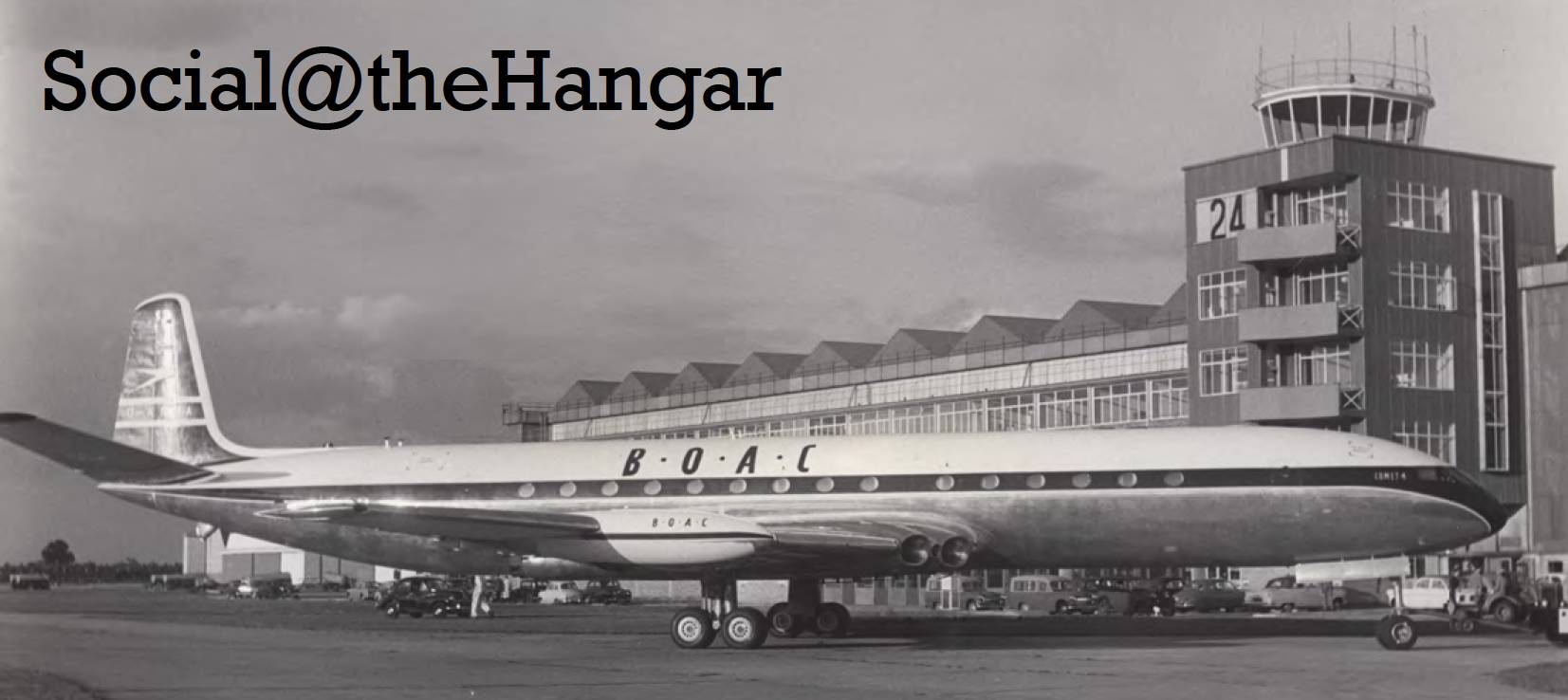Society News
On a bright sunny day in August, members of the Hatfield Branch Committee ventured out to the David Lloyd Club in Hatfield. This Grade-II listed building was constructed in 1952-3 and the offices and tower completed in 1954. The building served as the de Havilland flight test hangar, offices, fire station and control tower. One of the aims of the Royal Aeronautical Society is to celebrate technological or operational achievements that made an original and unique contribution of world significance. Therefore, our mission was to find out whether we could nominate it for a Royal Aeronautical Society Heritage Award in coordination with English Heritage for the siting of a plaque.
Our tour of the impressive sports facility owned by David Lloyd Clubs was a brief insight into its current use but also an opportunity for Steve and Peter to recall past employment and visits to the offices and aircraft assembly area. The sports club was busy but we were able to visit all the public areas. It was also possible to view the building externally, including the control tower, re-purposed accommodation above the fire station and the great concertina doors giving hangar access at each end.
 Above: The first de Havilland DH106 Comet 4, G-APDA, of BOAC, in front of the flight test hangar and tower at Hatfield in August 1958. RAeS (NAL).
Above: The first de Havilland DH106 Comet 4, G-APDA, of BOAC, in front of the flight test hangar and tower at Hatfield in August 1958. RAeS (NAL).
In 1941-2 de Havilland began to develop a jet engine, the Goblin, which was incorporated into the design of the Vampire jet fighter in 1943-4 and developed further as the Ghost. De Havilland’s prime interest was in civil aviation and, in 1946, it designed the world’s first jet passenger airliner, the Comet. Filling a gap in the market, and seen as the future of British aviation, 16 were ordered as early as 1947. The first commercial service was in May 1952. The Comet 4 was inaugurated in 1958 – just ahead of the Boeing 707 – and was followed by the dH Trident.
The hangar was commissioned for testing and maintaining the Comet. ‘Here is a structure every bit as dramatic as the jet liners it shelters’ (Aluminium in Modern Architecture). The aluminium alloy span of 200’ is only one seventh the weight of an equivalent steel structure. Apart from the savings in material, the light weight of the structure permitted prefabrication of unusually large sub-assemblies. The main structure was erected in only 13 weeks. The Comet hangar was the most sophisticated example of aluminium construction and was also the world’s largest permanent aluminium structure at the time.
 Left: The hangar today, in use as a David Lloyd health club. Right: From left: Keith Gowland, Chris from the David Lloyd Centre, Peter Elliott and Steve Rogers.
Left: The hangar today, in use as a David Lloyd health club. Right: From left: Keith Gowland, Chris from the David Lloyd Centre, Peter Elliott and Steve Rogers.
This giant aluminium hangar accommodated the Comet jet. It has a floor area of 66,000 square feet, sufficient to house up to eight airliners. The light weight of the construction materials enabled ease of transport and quick erection. The main part of the hangar was erected by 18 men in 13 weeks using only two five-ton cranes and little scaffolding. The de Havilland’s hangar consists of 12 aluminium alloy portals, each with a span of 217ft and giving a floor width of 200ft. Electrically-driven concertina type doors give an unobstructed door opening of 200ft wide and 45ft high.
According to the Historic England website, the hangar architects were James M Monro and Son, with Structural and Mechanical Development Engineers Ltd designers of the aluminium structure, and J Bak engineer for the foundations. The control tower of six storeys was noted for its early use of non-reflective plate glass and its air conditioning. Below it there are four floors with curved balcony fronts whose pattern of diagonal bracing is repeated in the fenestration. The three-bay fire station has a similar curved front with double doors with deep eaves canopy. The interior of the main shed is a clear-span space. The staircase to the control tower has a ‘molecule and lightning’ steel balustrade distinctive of 1950s’ styling.
